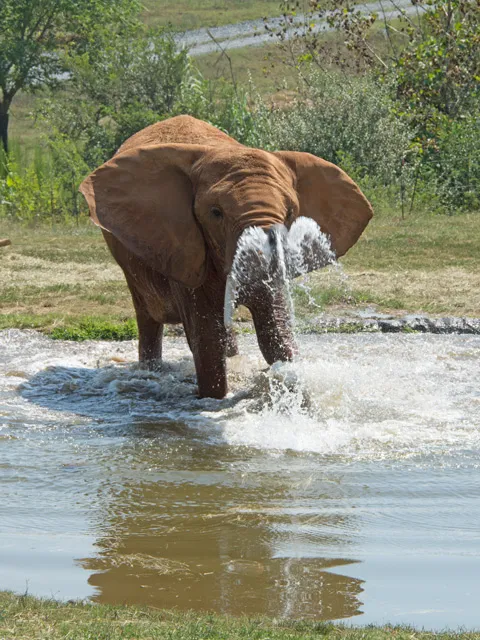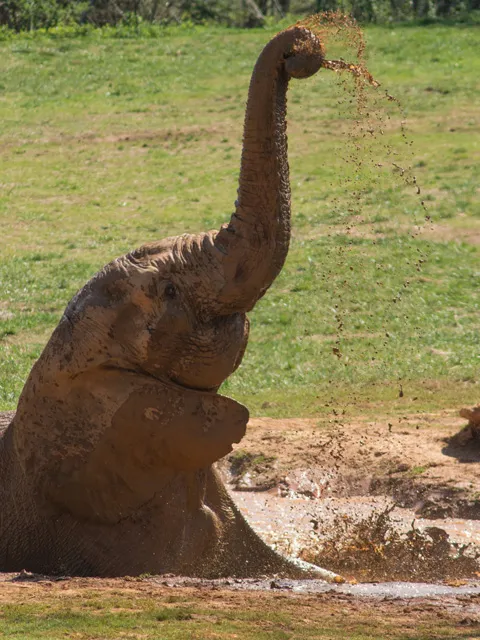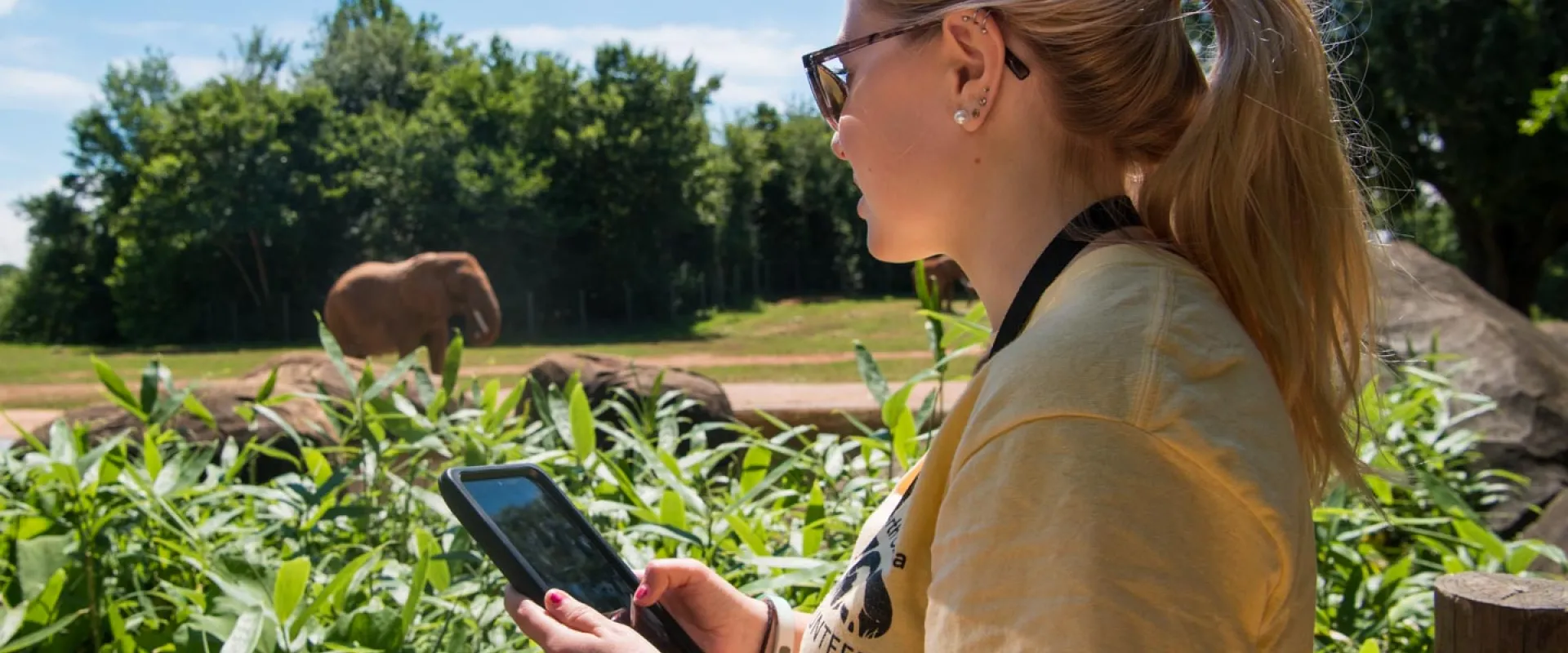Seeing the Elephants through the Trees
Emily Lynch, Associate Curator of Research for the North Carolina Zoo
You probably already know that at North Carolina Zoo, the care and well-being of our animals come first. It takes a lot to provide such excellent care, and we have fantastic keepers and veterinarians who look after the animal’s daily needs (even during extreme situations like the one we are in right now!). For each daily need, we carefully consider the best, most naturalistic options available, to enhance the lives of our animals. Beautiful habitats are created and constantly improved upon– something we excel at, as we are the world’s largest zoo! To stay mentally stimulated within these environments, we provide variation through training and enrichment (or novel items that we add to their environment). The animals also require specialized diets that not only meet their nutritional needs, but also provide them with opportunities to feed as they would in the wild.
But something you might not realize is that to effectively meet and understand each of these needs, the zoo relies upon scientific research.
Every species, and often even each individual, has unique requirements, and research plays a big role as part of our constant effort for improving their well-being. Scientific research projects allow us to continuously learn more about how our care – whether it’s the diets we provide, the habitats animal’s live in, or the daily enrichment we use – can improve the overall well-being of our animals.
That’s where my job comes in. As Associate Curator of Research, I work closely with our animal care teams to help answer questions about the effects of our management on our animal’s behavior and health. In the Zoo Research series, I’ll be sharing stories about how we use science at the Zoo.
One of the most exciting animals we have are African elephants. We have a multi-generational herd consisting of four females, including a mother-daughter pair, and two males, and over the years, our research team and interns from North Carolina State University have been closely monitoring them. A few years ago, there were some changes in our herd structure, where we could have a lot of elephants, up to five, out on habitat at one time. This was wonderful for their social lives, but with more elephants on habitat, we needed to understand how the herd used the space and the shade available to them.
To examine this, one of our students, Monica Hendricks, helped us design and conduct a study. Monica’s first task was to create a map of the shade.
Using satellite photos and cutting-edge software programs, Monica was able to quantify the number of “elephant-sized shade patches” (approximately 48 ft2) available in the elephant habitat. But shade availability can change with time of day, so Monica took extra care to calculate how the number of these patches changed by time of day and throughout the year, using special software that could predict how shade created by trees in the habitat might shift over time.
From Monica’s calculations, she discovered that the zoo’s habitats had more shade patches than we did elephants, the majority of the time.
The next step was to consider how elephants used the habitat. Despite living in rather hot savannah conditions in the wild, elephants like to keep cool – whether it's bathing in a river (Picture 1), rubbing themselves with mud (Picture 2), or staying in the shade. While the elephants have access to two large pools and, as Monica had discovered, a lot of shade providing trees, we needed to know how the elephants used these resources. Monica watched the elephants for hours and hours each week over several months, taking careful note of how they used the shade as well as their other behaviors.
In the end, Monica found that the elephants didn’t even use all the shade that was available to them! There was more than enough shade and other opportunities to cool off for our herd. Monica’s work has helped us address an important question about our largest animal’s needs.
It’s clever and effective studies like this that illustrate how critical research can be for animal management at the zoo!
Keep reading this blog to learn more about how we use science at the Zoo!

Artie, one of the male elephants, cooling down on a hot day with a bath

Batir, a female elephant, enjoying a mud bath to help beat the heat

